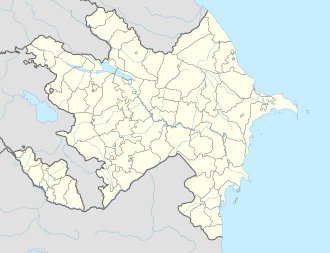Alukend | |
|---|---|
Village | |
| Coordinates: 40°06′55″N46°03′07″E / 40.11528°N 46.05194°E | |
| Country | |
| District | Kalbajar |
| Time zone | UTC+4 (AZT) |
| • Summer (DST) | UTC+5 (AZT) |
Alukend was a village in the Kalbajar District of Azerbaijan.
This village was occupied by the self-proclaimed Nagorno-Karabakh Republic during the First Nagorno-Karabakh war. It was returned to Azerbaijan on 25 November 2020 per the 2020 Nagorno-Karabakh ceasefire agreement, that ended the Second Nagorno-Karabakh war.


